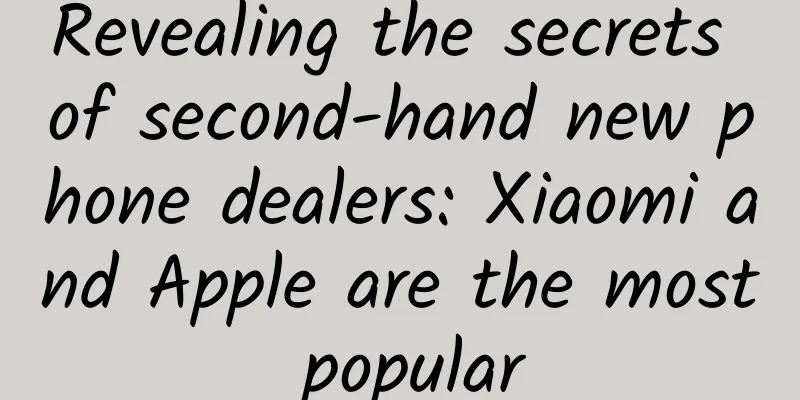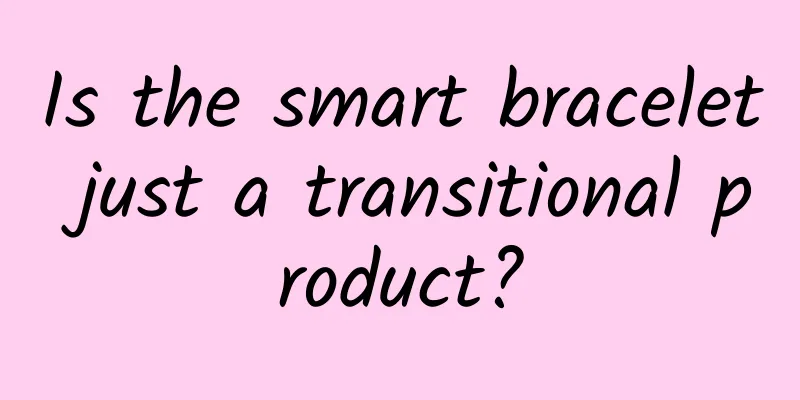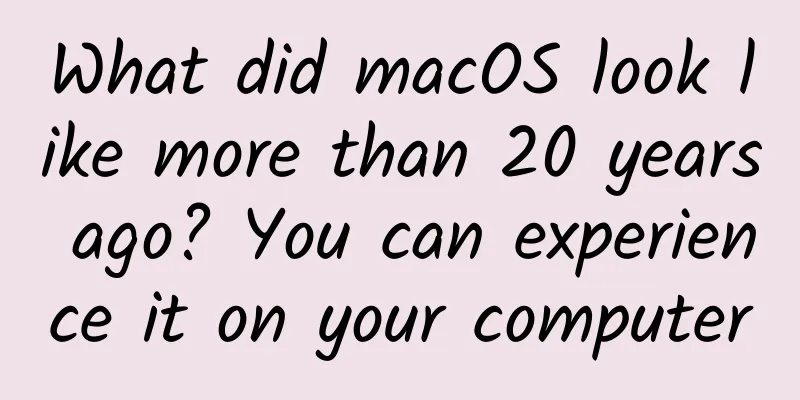Revealing the secrets of second-hand new phone dealers: Xiaomi and Apple are the most popular

|
As the autumn rains come, the weather gets colder. Beijing has become rainy since September. The continuous rains have not affected the enthusiasm of the guides in front of Dinghao and Hailongmen. As soon as you get out of the Zhongguancun subway, you will be greeted by these hardworking "guides" with umbrellas, "Want to buy a mobile phone?", "5s?", "Selling mobile phones?", "Mi 4?"... The mobile phones that these customers are guided to purchase are not second-hand phones in the traditional sense, but brand new, unopened machines in the hands of customers. They will introduce customers with such needs to upstream mobile phone purchasing dealers, and customers will trade directly with the recycling dealers. Don’t underestimate these guides. Every day, dozens or even hundreds of mobile phones are purchased by upstream vendors through them. In return, upstream vendors will pay them 5-20 yuan for each mobile phone. Among them, the commission for iPhone and Xiaomi mobile phones is the highest, followed by some brand mobile phones, and the lowest is for some small brands or mobile phones that do not have a good market response. It makes sense that second-hand and new phone dealers "disdain the poor and love the rich". They use their own cash to purchase phones, and then sell them after processing to make a profit from the difference. For them, acquiring phones is just the beginning. In order to quickly return cash, they must find the right sales channel for each machine they acquire and sell it quickly. Alternative distribution of thousand-yuan smartphones Zhang Pengfei is the upstream mobile phone dealer who "guides" the Zhongguancun Hailongmenkou. He was born in 1989 and graduated from a technical secondary school, but he has been in this business for three years. These three years of experience have made Zhang Pengfei look more mature than his peers. His work process is as follows: he guides customers at the door, and those who sell mobile phones call him. After finding customers, he bargains with them, reports the final price and the condition of the mobile phones received to the company, and then completes the transaction with the seller, repeating the cycle over and over again. At the same time, he also looks for sellers on his own through the Internet. At 9 o'clock in the morning, Zhang Pengfei reported to their company on time. He turned on his computer before having breakfast and looked for a suitable second-hand new phone on classified information websites such as 58 and Ganji. Not long after, he contacted a seller of the Redmi Note Enhanced Edition and decided to meet in Zhongguancun. Half an hour later, Zhang Pengfei appeared at the door of Starbucks behind Hailong with a backpack full of cash. Of course, he was not there to drink coffee. A few minutes later, he met the seller. Unexpectedly, Zhang Pengfei did not bargain for the 1,000 yuan price offered by the seller, and readily took out the cash to complete the transaction. "The profits brought to us by thousand-yuan smartphones are substantial." The thousand-yuan smartphones mentioned here mainly refer to smartphones with high cost-performance and certain brand recognition, such as Redmi and Huawei Honor 3C. Since these smartphones are already priced very low, for mobile phone dealers, under normal circumstances, the profit margin is not very large. In Zhang's opinion, this type of mobile phone has a common feature: "the demand for mobile phones is concentrated in second- and third-tier cities, but due to restrictions on sales models and channels, the supply is often concentrated in Beijing. In addition, manufacturers control shipments, resulting in a shortage of supply in the actual purchase market for thousand-yuan smartphones." Therefore, Zhang Pengfei and his team are willing to pay a price not lower than the retail price to purchase this type of mobile phone, and then increase the price to sell it to second- and third-tier cities to earn a profit by earning the price difference. I still remember when Redmi was just launched on the market, Zhang Pengfei would go to the gate of Hailong every morning with handfuls of cash to "solicit customers". As long as someone was willing to sell a Redmi phone, he would quickly buy it for around 1,200 yuan, and then distribute it to other channel dealers across the country for 1,500 yuan. Sina Technology visited some terminal sales halls in second- and third-tier cities. Although it has been more than half a year since the launch of Redmi 1S, the price of the phone is still not less than 1,200 yuan in these sales halls. Some sales halls even require a deposit before you can get the phone. A clerk told Sina Technology that when Redmi was first launched, the highest price of Redmi in their store was 1,699 yuan, which is more than double the original price of Redmi. The survey found that the sales model of other brands of thousand-yuan smartphones is basically the same as that of Redmi. As of August 31, 2014, the prices of thousand-yuan smartphones in second- and third-tier cities are still 300-500 yuan higher than the original price: Huawei Honor 3C sells for 1,200 yuan (original price 798 yuan), Redmi Note Enhanced Edition sells for 1,300 yuan (original price 999 yuan), and Redmi 1S sells for 1,200 yuan (original price 699 yuan). At D.Phone in Beijing, Sina Technology found that the Redmi Note sells for 899 yuan, while the Redmi has dropped to 399 yuan. iPhone no longer available in China Unlike Zhang Pengfei, who has a special liking for Xiaomi, his colleague Duan Shengtao is a complete "Apple fan". He is called an "Apple fan" because he has already mastered the origin of each iPhone version, the arrangement rules of the serial number, and the method of distinguishing the authenticity of accessories. This is also due to the iPhone recycling he is responsible for. Every year, the period from the release of a new iPhone to its launch is the most leisurely period. As people are clearing out their inventory and waiting to get a new iPhone, there is not much demand for recycling. Usually, we just collect a few second-hand phones, refurbish them and repackage them. Although Duan was free at this time, under normal circumstances, his business was much more complicated than Zhang Pengfei's. There are three main types of iPhone recycling models: new iPhones sold in China, parallel imports including new iPhones sold in Hong Kong, and iPhones that are two generations apart or more. When they buy iPhone 5s, which is in a stable price stage, for example, the repurchase price of a brand new Chinese version is between 4,500 and 4,600 yuan, depending on the operator and the model; the repurchase price of a brand new Hong Kong version is 4,000 to 4,100 yuan. Some Hong Kong versions may have their accessories replaced once, and the repurchase price of such phones will not exceed 3,800 yuan. When selling, the bottom line price of the Chinese version will be controlled at 100 to 200 yuan lower than the ordinary Chinese version. The so-called "Hong Kong version" is generally around 4,500 yuan, which is only 100 yuan higher than the official retail price in Hong Kong. On the surface, iPhone sales do not bring much profit to merchants, but how can merchants get up early without profit? Take the new iPhones sold in China and parallel imports as an example. After recycling, the recycling vendors will replace the original parts of the iPhone with accessories they purchased from Huaqiangbei (mainly data cables, power plugs, and headphones), and then sell them after their secondary packaging. The replaced genuine accessories will eventually flow into the market at a price slightly lower than the official price, and eventually appear as official genuine accessories. According to Apple's official price, the iPhone data cable and power supply are sold at 149 yuan, and the price of headphones is 228 yuan. The civet cats used to replace the prince all come from Shenzhen Huaqiang North Market. The company has special procurement personnel to ship them regularly from Shenzhen to Beijing. Sina Technology learned from Huaqiangbei dealers that the price of iPhone accessories such as data cables, power supplies and earphones ranges from 0.5 yuan to 5 yuan, depending on the purchase volume. For iPhone dealers of a certain scale, the cost is close to zero. Duan Shengtao pointed out that under the current domestic iPhone circulation system, it is basically impossible to buy genuine Hong Kong-made iPhones from merchants in China. "This process is a common phenomenon among dealers in Zhongguancun." Among the distributors of his company, there are Apple-authorized repair shops, dealers specializing in accessory sales, and of course mobile phone retailers in Zhongguancun. Apart from the period when the iPhone price was stable, Duan Shengtao said that every time a new iPhone was released, Zhongguancun would sell the iPhone at a price of nearly 10,000 yuan within a week. During this period, the supply was like red hundred-yuan bills to merchants. In the early stage of the release of a new iPhone, the previous product would be sold at a low price to clear the inventory. Lowering the price of unknown brand machines Of course, except for well-known brands such as Xiaomi and iPhone, other second-hand new phones do not receive these preferential treatments. Once, Zhang Pengfei was guided to negotiate the recycling of a mobile phone of a certain domestic brand. It was a mobile phone that was sold on JD.com for 1999 yuan. After taking a look at it, Zhang Pengfei directly lowered the price to 500 yuan. The seller refused to accept the price at that time, but after going around Zhongguancun, the seller finally sold it to Zhang Pengfei for 550 yuan. If Zhang's daily work is compared to an empty cup, Xiaomi is the stone used to fill the cup, and this type of mobile phone is the sand that fills the gaps between the stones. Unbranded mobile phones sold in second- and third-tier cities can still be sold for around 1,500 yuan. Although the profit margin is high, the sales volume is far less than that of mobile phones such as Xiaomi and Apple. The reason for lowering the purchase price is also to hope to make up for the lack of sales with high profits. In Zhang Pengfei's words, in fact, these mobile phones are either collected or not. Sometimes people buy them because of the temptation of high profits, but later they have to worry about sales. Sometimes they even end up with nothing in their hands, so they will strictly control the number of such mobile phones recycled. After all, what Zhang Pengfei is worried about is the time the phone stays in his hands. Machines like Xiaomi and Apple can be sold quickly without worries, and there are buyers every day. However, the sales of generic brands of mobile phones are not ideal, and the extended time will have a direct impact on cash flow, which is also the lifeblood of the second-hand new phone recycling industry. Cash flow faster The company where Zhang Pengfei and Duan Shengtao work is located in the Dinghao office building. Recycling second-hand new phones is one of the company's businesses. In this small house of only a few dozen square meters, tens of thousands of mobile phones come in and out every day. According to them, nearly half of the mobile phones recycled by merchants in Zhongguancun are eventually received by their family. In other words, if consumers sell their mobile phones in Zhongguancun, the base prices they ask for are basically the same, because most of the mobile phones are purchased by this company from the dealers downstairs. This company has formed an octopus-like sales network through various retailers in Zhongguancun. Retailers that directly face consumers are the company's tentacles. When retailers are unable to determine the purchase price for a product, they will confirm with Zhang and Duan based on the product. After confirmation, all these repurchased "second-hand" products will flow to this company. In return to the retailers, the company will give the retailers a certain percentage of the purchase price of the products. It is also the supplier of mobile phone products and accessories for the retailers. The seemingly good business model actually has its weaknesses. Zhang Pengfei revealed that when Xiaomi 4 was just released, they spent a lot of money on acquiring F codes, but since the product had just been launched, the supply of Xiaomi 4 was not very fast, and the time to convert Xiaomi 4's F codes into mobile phones was prolonged, resulting in a large part of the funds being unable to quickly flow back. Therefore, their company no longer purchases F codes and only recycles Xiaomi 4. This coincided with the release of the new iPhone, and the company did not have extra funds to offset this loss, so Zhang Pengfei had to control his daily purchase volume. He admitted that he missed out on several good products due to funding reasons. Duan also made a similar mistake when acquiring mobile phones. When the iPhone 5S was released, the "Gold" model was undoubtedly an object of competition among merchants. In addition, Duan was also optimistic about the colorful 5C. He wrongly estimated that the colorful iPhone 5C would be favored by more female users. In the end, the money he invested in the 5C flowed back slowly, delaying his recovery of the "Gold" model. Zhang Pengfei and Duan Shengtao's work is like that of the managers of fast food restaurants such as KFC and McDonald's. They need to have a sufficient understanding of the daily market demand and, based on the market conditions and the daily fluctuating prices, clearly know how many mobile phones they should purchase every day to balance their cash budget. In essence, their work assumes some of the functions of channels. Accordingly, they will also bear some pressure from channel dealers. To reduce this pressure, the most direct and effective way is to quickly return cash and avoid missing the next cash return opportunity due to market fluctuations. In short, the key to the mobile phone repurchase business is how to quickly make the cash in the backpacks behind Zhang and Duan flow back. As a winner of Toutiao's Qingyun Plan and Baijiahao's Bai+ Plan, the 2019 Baidu Digital Author of the Year, the Baijiahao's Most Popular Author in the Technology Field, the 2019 Sogou Technology and Culture Author, and the 2021 Baijiahao Quarterly Influential Creator, he has won many awards, including the 2013 Sohu Best Industry Media Person, the 2015 China New Media Entrepreneurship Competition Beijing Third Place, the 2015 Guangmang Experience Award, the 2015 China New Media Entrepreneurship Competition Finals Third Place, and the 2018 Baidu Dynamic Annual Powerful Celebrity. |
<<: Do you like changing your phone number?
>>: Can we still happily use public free Wi-Fi?
Recommend
Can 360 Bidding Software Assistant really improve promotion results?
Many friends started to do 360 bidding promotion ...
Coca-Cola's Centennial Marketing History (Part 2)
In the last article on Coca-Cola’s 100-year marke...
Building a secure phone: Is the Chinese government also going to join the smartphone war?
The Wall Street Journal published an article toda...
Even the iPhone is no exception! Here are the 12 tech products that disappeared in 2015
According to PCWorld, tech products are like peopl...
The biggest highlight of Android M: one less reason to root
For various reasons, most Android users always wa...
Tesla Model Y red version real shot exposed, the trunk is narrower and more integrated
Recently, Tesla's latest Model Y crossover ve...
Why do middle-aged men love fishing so much?
From being able to dig holes anywhere as boys, to...
The most comprehensive collection of 112 essential tools for new media operations!
The core essence of new media is actually tools. ...
Why do people pick their noses? Will picking your nose make your nostrils bigger?
1. Why do people like to pick their noses? Becaus...
CTO Training Camp Guo Jiangliang: Big Data Platform in Baidu Private Cloud and Open Cloud
Guo Jiangliang, R&D manager of Baidu Open Clo...
How did Lao Luo, who has feelings, manage this event?
Although netizens always jokingly say that watchi...
Big Dog is here "Small Game Promotion Practical Course" takes you to build a game promotion and monetization account
No. 1 on the Talent List, single video revenue of...
Is the “heavy fine” of 260 million for Kuaibo too much?
Only by changing the tendency of weak law enforcem...
The new year has just passed and the three key words of online live streaming in 2017
From the industry being ignited, to capital scram...
[Beautiful article] This is how the first batch of users of Didi, Momo, and Meituan came from!
How did those awesome Internet companies promote ...









